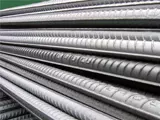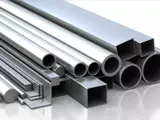Warehouse Management of Rolling Bearings
Introduction
Rolling bearings are a type of machine component that utilizes the rotational speed of the component to support, guide, or reduce friction between surfaces. Rolling bearings are a key component of many machines and structures, and their proper care and maintenance is essential to ensure their optimal performance. In order to ensure that rolling bearings are properly maintained and used for their design purpose, it is important for warehouses to have good warehouse management. This document will outline strategies for improving warehouse management of rolling bearings.
Location and Storage of Bearings
The first step in warehouse management of rolling bearings is to determine the correct location and method of storing the bearings. When storing bearings, the warehouse should take into consideration the climate, the operating temperature range of the bearing, and the area where it will be most frequently used. This will ensure that the bearings are not subjected to overly dry or wet conditions that could cause them to fail prematurely.
The warehouse should designate a specific area of storage for each type of bearing and label the bins, racks, and shelves clearly. This will help to reduce confusion and ensure that the bearings can easily be accessed when needed. It is also important to ensure that the bearings are stored away from any sources of heat, extreme cold, or any other potentially damaging elements.
Inventory and Inspection
It is essential to regularly inspect and maintain an inventory of the bearings in a warehouse. This helps to ensure that all bearings are in good condition and are ready for use at any time.
This should be done at least twice a year, but it may also be done at additional intervals depending on the usage of the bearings in question. Inspection should include looking for visible damage, rust, or signs of wear and tear. Additionally, the housing, seals, and bearings should be inspected for any signs of deterioration or malfunction.
Maintaining Records
Another important component of warehouse management of rolling bearings is to maintain detailed records of the bearings’ performance. This can include the type of bearing, its lifespan, the amount of usage, and any repairs or maintenance that have been performed. This information can then be used to determine when a bearing needs to be replaced or repaired.
It is also essential to keep records of any purchases or sales. This can help in determining the necessary quantities needed to be purchased or shifted between warehouses, as well as tracking the condition of the bearings over time.
Conclusion
In conclusion, warehouse management of rolling bearings is an important component of the overall maintenance and care of rolling bearings. Proper storage, inspection, and maintenance records are essential to ensure that the bearings are in good condition and ready for use. By adhering to these strategies, warehouses can ensure that their bearings are optimized for maximum performance and longevity.






